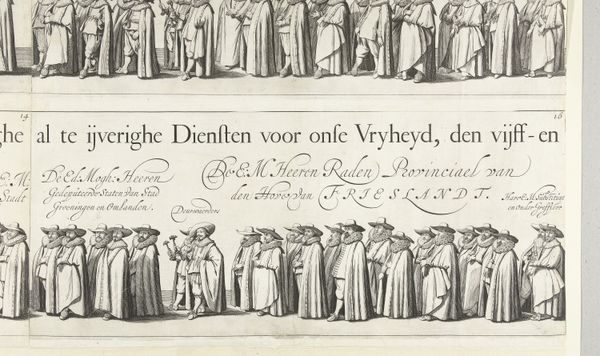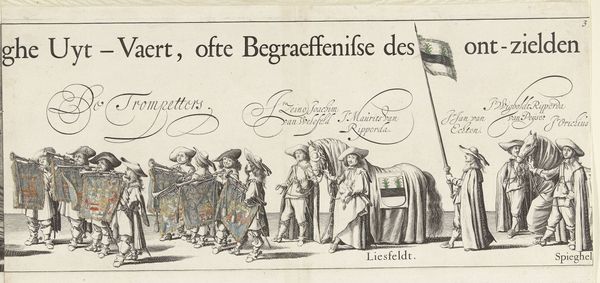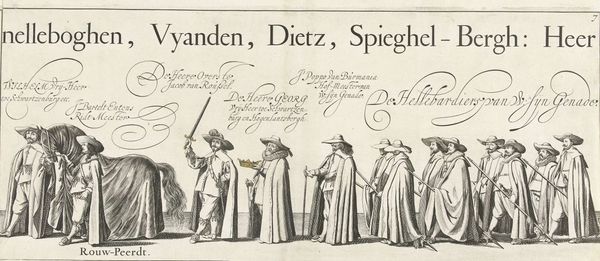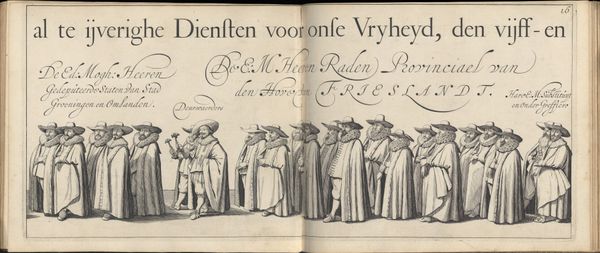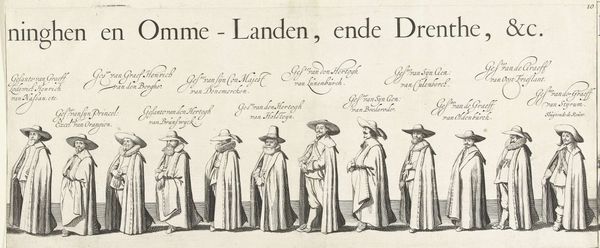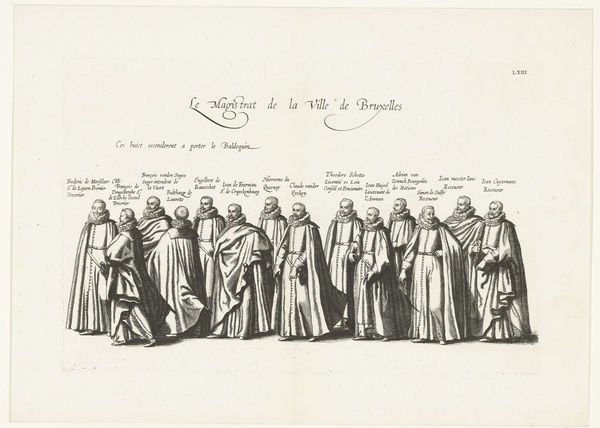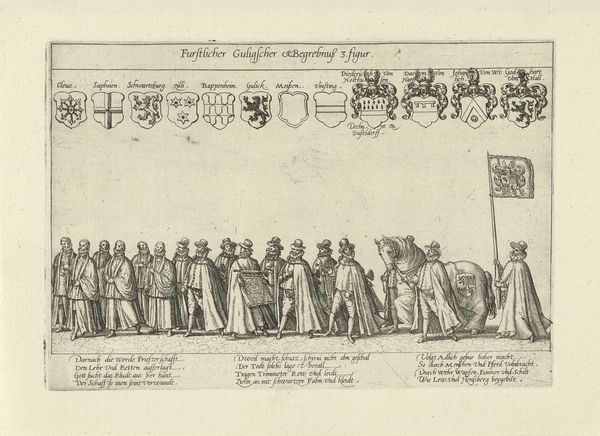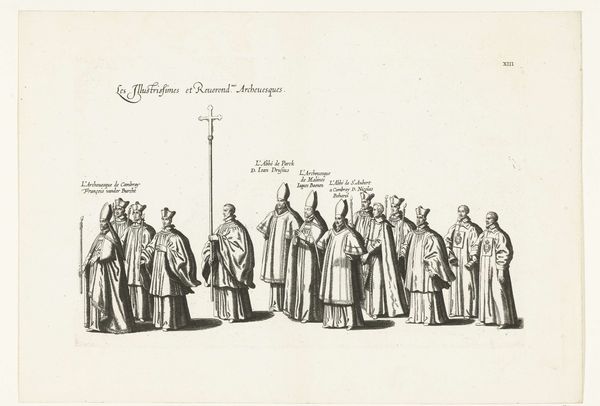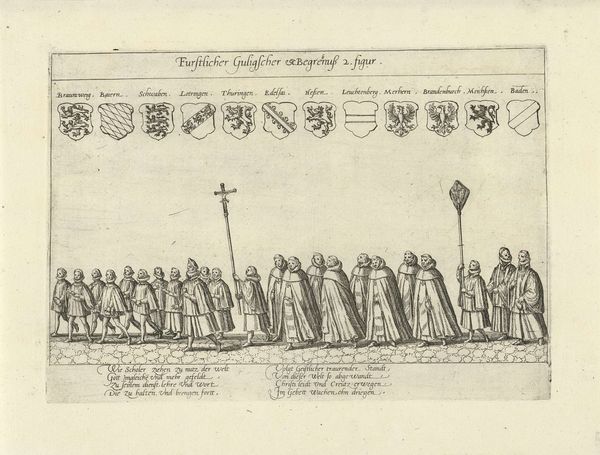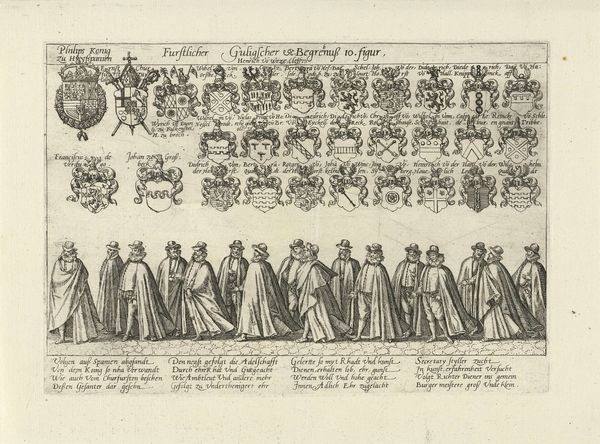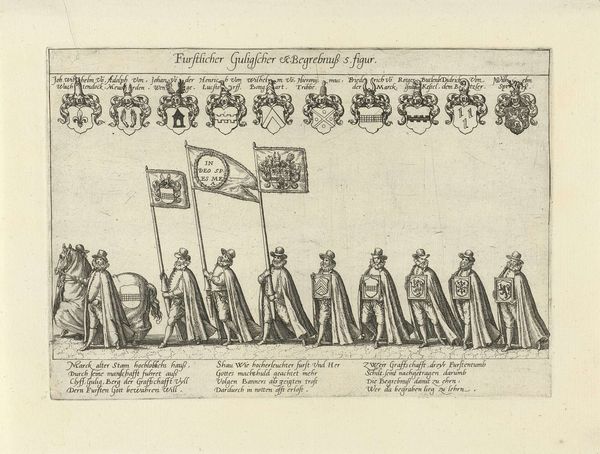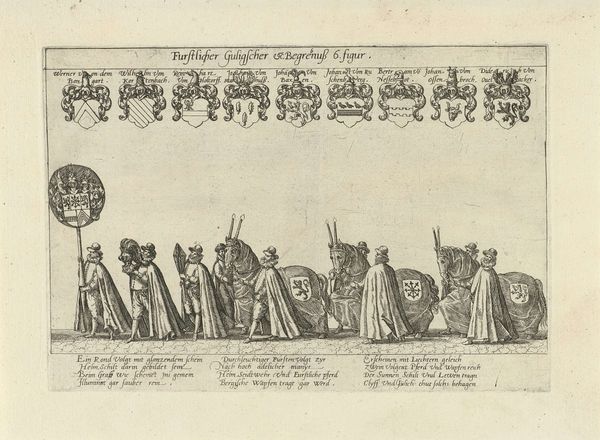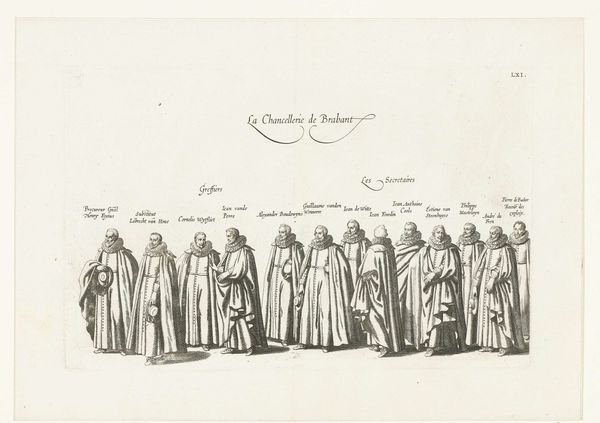
Deel van de begrafenisstoet van Ernst Casimir, graaf van Nassau-Dietz te Leeuwarden (plaat 11), 1633 1634
0:00
0:00
print, engraving
#
portrait
#
baroque
# print
#
group-portraits
#
history-painting
#
engraving
Dimensions: height 220 mm, width 485 mm
Copyright: Rijks Museum: Open Domain
Editor: Here we have “Part of the Funeral Procession of Ernst Casimir, Count of Nassau-Dietz in Leeuwarden (plate 11),” from 1634, attributed to J. Hermans. It's an engraving, and it strikes me as very formal and processional. All these figures in nearly identical attire... what should I be looking for here? Art Historian: This is fascinating. A funerary procession frozen in time. Each figure, while seemingly identical at first glance, carries their own weight of significance and societal standing through symbolic cues. The artist, though seemingly prioritizing uniformity, also embedded subtle signs. Notice the text above each group of figures. Editor: I see... they seem to be arranged by title or rank? States General, councilors... Is that the intention here? Art Historian: Exactly. It speaks to the deep structure of their society, a visual representation of hierarchy and power even in mourning. The robes themselves become signifiers, embodying not just grief but also the authority each person carries. Do you see any variation in the robes themselves? Anything that stands out despite the overall similarity? Editor: Well, now that you mention it, the collars seem slightly different between groups, some standing out more? And maybe some slight variations in the hats? Is that a purposeful distinction? Art Historian: Precisely. These are visual markers. Almost like a code, instantly readable to contemporaries. Consider this as cultural memory inscribed visually. The event is transient, but the representation cements social structures. How do you feel knowing each small adjustment indicates particular privilege? Editor: It makes the procession seem less like shared mourning and more like a display of power, even in death. Sort of unsettling, but really makes me see how much is communicated through symbols and presentation. Art Historian: Yes. Perhaps even performative. Seeing how codes reflect values is always telling. Editor: Thanks! I hadn’t considered that even what appears uniform is carefully constructed and communicative. It is powerful how small visual cues encode such deeper stories.
Comments
No comments
Be the first to comment and join the conversation on the ultimate creative platform.
